New International African American Museum Honors Journey Of Black People From Slavery To Present Day
CHARLESTON, S.C. – It has been more than two decades in the making, with design, construction, and other delays along the way, but the International African American Museum in Charleston, South Carolina, officially opens to the public on June 27.
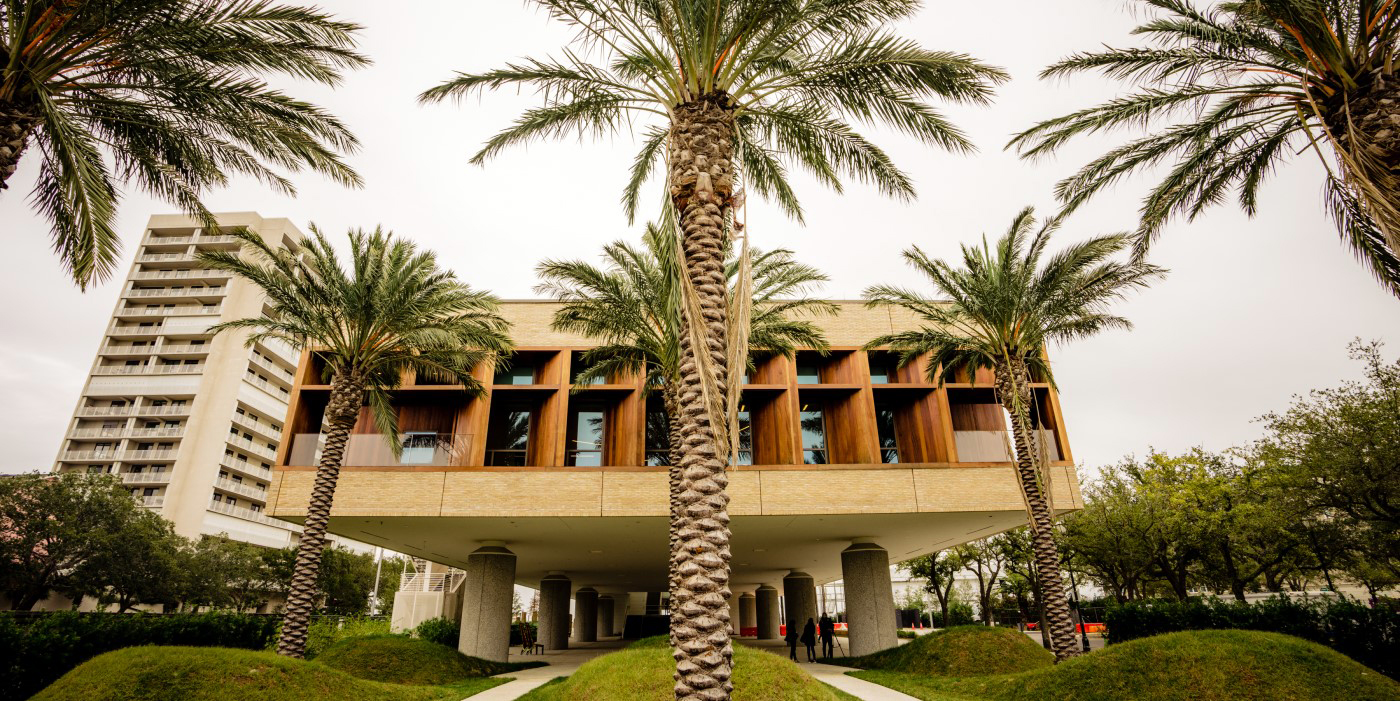
The museum referred to as IAAM (pronounced I AM) is about 150,000 square feet of indoor and outdoor space. Its mission is to personalize the stories of the brutal journey Africans endured when they were forcefully brought to this country — humanize their traumas, victories, accomplishments, and transformation, up to today. Museum officials say they also want to place a new focus on the strong connections between Africa, the Caribbean, and members of the diaspora in the exhibitions.
The elongated IAAM sits atop a total of 18 pillars that are 13 feet tall, overlooking Gadsden’s Wharf, where tens of thousands of enslaved Africans who survived the Middle Passage debarked from ships into a country, not of their choosing.
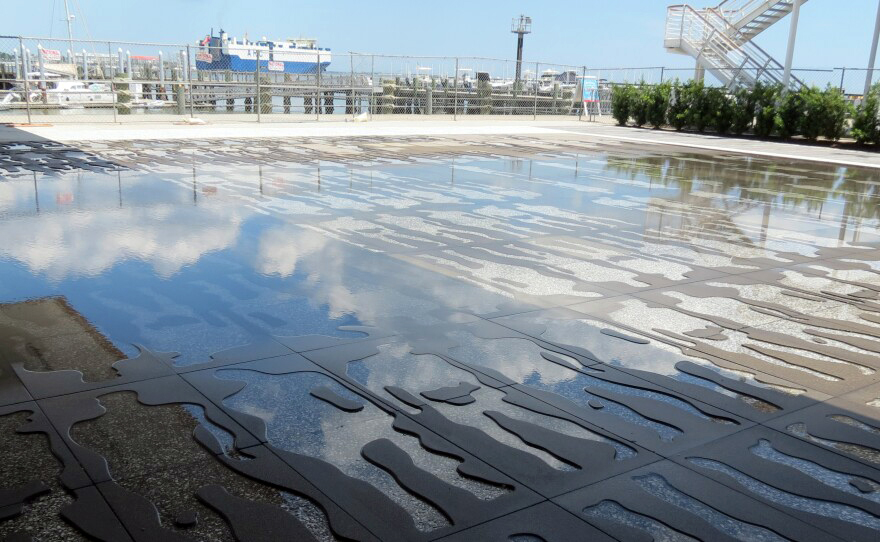
The site at Gadsden’s Wharf sits along the Cooper River waterfront near downtown Charleston. It was built in the mid-1760s by Christopher Gadsden, a merchant, politician, and Revolutionary War leader. His goal was to make his businesses more profitable by avoiding paying wharfage rental fees to other dock owners. Because of the wharf’s later use in the slave trade, it has been described as both a sacred, revered, and significantly historic place — but also as the location where a horrific chapter in American history took place.
Dr. Bernard Powers, director of the Center for the Study of Slavery at the College of Charleston, describes what the wharf would have looked and sounded like during the years it served as a major debarkation port for Africans, under horrendous conditions to be sold into slavery.
“It was, of course, a wooden dock, we estimated it as being about 840 feet long. So, there would have been lots of ships there … We’re talking about 1806, 1807 that time period, with ships waiting to dock to come in to offload the people. So, it would have been a bustling place. You would have heard all kinds of sounds. The anguished cries of African people. All were landing in a foreign place or a place that they were completely unfamiliar with.
“People who would have been emaciated would have been debilitated, exhausted to survive the transit across the Atlantic Ocean, ill. And in various stages of morbidity and mortality, and I’m sure that one would have been able to hear African languages spoken by Africans. Perhaps some words were whispered. Others might have screamed, secret words or words of comfort, and probably people looking for others from the same village.”
Powers said that there surely would have been chains rattling and harsh words shouted.
“Other wharves in the city were engaged at will in the transatlantic slave trade. But beginning in early 1806, the trade in Charleston was confined specifically to Gadsden’s Wharf.” Powers added, “So what that means is when the trade finally ended in South Carolina and indeed to the United States, the place where it ended was at Gadsden’s Wharf and that’s what makes it so terribly significant.”
Historians estimate that 30,000 to 40,000 Africans entered the country through Gadsden’s Wharf from 1806, the earliest record of it being used in the slave trade, until about 1808, according to Powers. With other ports in Charleston, and there were several, being forbidden by a city ordinance from allowing slave ships to dock on their wharves, Gadsden’s Wharf was the busiest port during that time in the transatlantic slave trade in North America. It included several large warehouses to store rum, rice, equipment, and other goods. Some historians say the warehouse area was also likely used to house enslaved Africans while shippers waited for auction prices on them to increase.

”When the Gadsden’s Wharf complex was built in the 1800s, it was the largest wharf complex in North America,” Dr. Tonya Matthews, president and CEO of IAAM, said. “We did some archeological digging, so there’s a steel band embedded in the ground that helps visitors understand exactly the spot where the ships would have come all the way up to this space. And then the museum rises above that. Our architect took on our language of this being a sacred site and hallowed ground, and out of that, he decided that the museum itself would not touch the ground.”
The $100-million one-story, pale yellow brick museum building was funded through public and private money. It is 84 feet wide and 426 feet long with the front made of glass and wood, pointing toward the water, framed with sapele wood from trees grown mainly in West Africa. The building resembles a ship waiting to be hoisted into the water. Its design is a bit unassuming, with nothing adorning the outside walls.
Powers says the thing that’s special about the museum in Charleston is not the building. ”It’s the place, it’s the location. And so we really did not want a flashy or eye-catching building to take away from the space, the sacred historical impact of that place. That is further reinforced by the minimalist design of the building itself.”
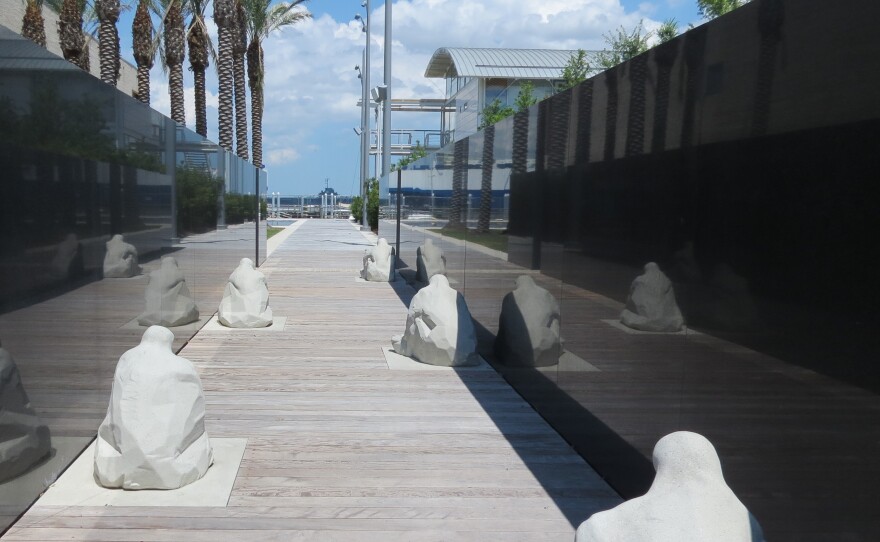
The museum’s surrounding grounds that face Gadsden’s Wharf and the open waters reflect the site’s — and Charleston’s — history in numerous ways. It’s called the African Ancestral Memorial Garden — a large public area that was designed by African American landscape architect and MacArthur “genius grant” fellow Walter Hood.
Malika Pryor, IAAM’s chief learning and engagement officer said the garden level is considered the first floor of the museum.
“Every single plant that you see in the garden has been specifically selected, often a reflection of South Carolinian flora, but also of the diaspora. Every single installation is an homage or in memoriam to those captured and enslaved Africans, the installations have their own respective significance, and there’s still a garden,” Pryor said.
And it includes a space for a small field of the disappearing sweetgrass, used by Charleston artisans still today to make baskets. There are also several tall African-style steles memorial mounds, erected in the garden. And a few white stone, teardrop-shaped sculptures that are deep enough to grow rice, a skill that many West Africans brought with them to the U.S. There are two tall, long, black granite walls erected side by side. In between those walls are sculptures of kneeling human figures, pointing toward the water.
“The five kneeling figures are an homage to those enslaved Africans who were brought here, particularly to the Lowcountry and to Charleston, to build the rice economy, which is the backbone for Charleston’s rise as the first center of wealth in the United States,” Pryor said.
“They had to transform hard-bottom cypress swamps into arable rice plantations and that took incredible movement of the land,” Pryor continued. “It took the development of irrigation systems. The rice system initially failed in South Carolina. And these were people that had been cultivating rice and had built rice economies for centuries. It is the brilliance of those enslaved Africans that were specifically and strategically captured from rice cultivating nations, communities, and societies in West Africa that make that entire scheme possible.”
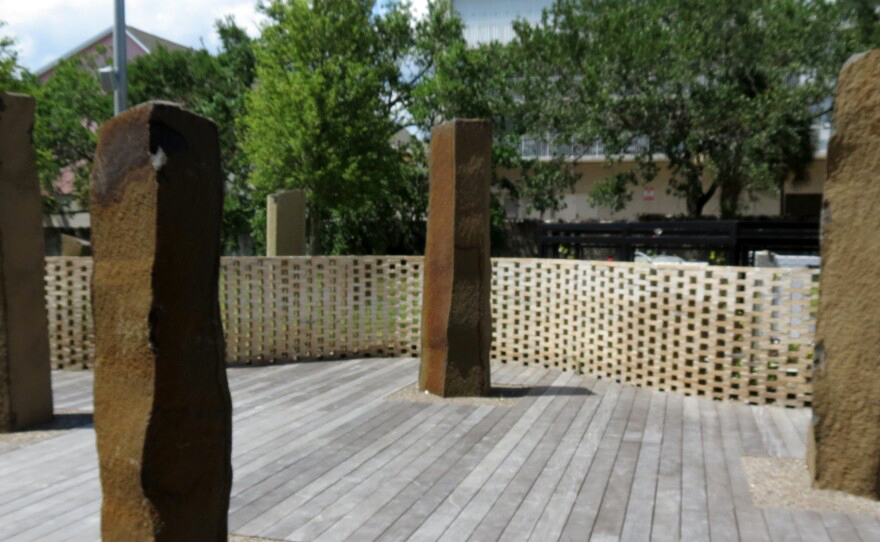
The Ancestral Memorial Garden also includes two shallow reflecting pools close to the wharf’s edge, with the names of countries where the Africans came from etched on the edges. The pools have a haunting effect because at the bottom of them are outlines of how captured Africans would have looked, tightly chained in the hulls of ships, that surface and disappear under the water as it ebbs and flows.
“That is modeled on the sketch of the Brooks slave trading ship,” Powers said, “which was a very well-known, famous slave trading ship of the late 18th century. And abolitionists used the sketch to argue for the end of the transatlantic slave trade because you could see the inhumane way in which people were kept down in the hulls of ships. And so, the images kind of pop out at you.”
The tidal pools show the outlines of captured Africans as they would have been chained in ship hulls. One pool shows departure, one shows arrival to U.S. The water ebbs and flows over figures, denoting those who made it through the Middle Passage and those who did not for various reasons, such as illness or suicide or they were killed.
“We really do benefit from the power of place,” Pryor said. “We are on the land where it happened and that positions us and compels us to take a very strong stance with authenticity and honesty and love. And in order for us to be telling that story holistically, requires us to engage that international and diaspora community.”
Gadsden’s Wharf played a significant role in the history of the transatlantic slave trade, which is why the site is appropriate for the museum, whose mission is to tell the story of a significant part of American history and its international connections that continue today.
“People who visit the museum will have a sense of the importance of that place and will have an appreciation of the distance, the journey because that’s what we talk about at the museum, the African American journey,” Powers said. “Where that journey started and where that journey continues and to have a great regard for that experience that occurred down in the hulls of the slave ships themselves, where a process unfolds.”
For more information on the International African American Museum, click here.
This article first appeared on WFAE.org


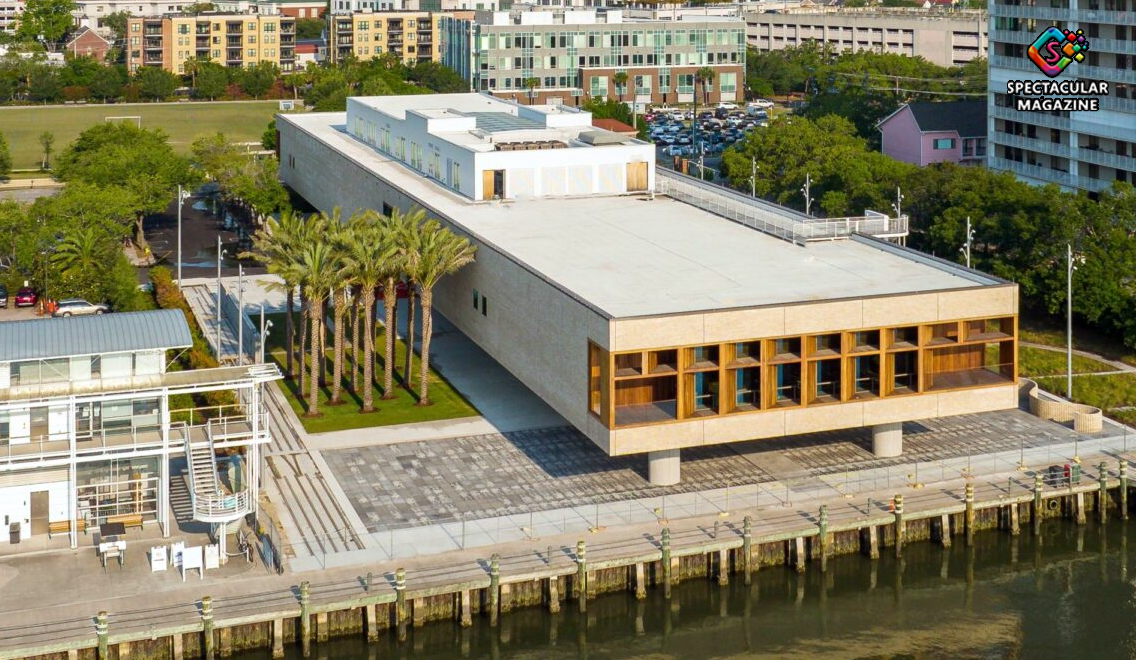
One thought on “New International African American Museum Honors Journey Of Black People From Slavery To Present Day”
Comments are closed.